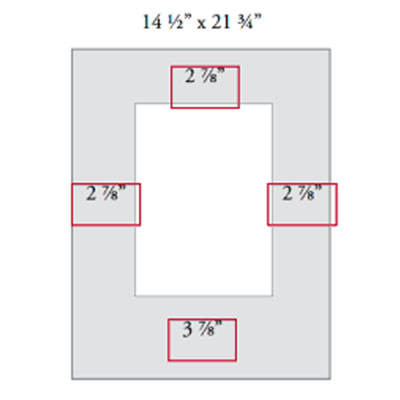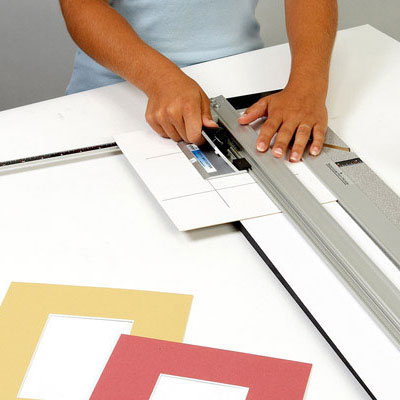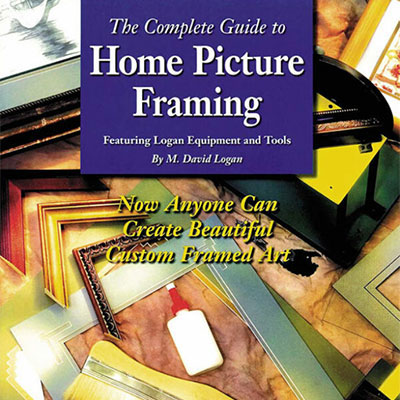Part One in a Series
Picture framing is expensive. The problem is not just one of price, but of perception. Many things are expensive but few things are as out of alignment with what consumers expect them to cost. Many consumers express shock at the cost of picture framing, and it's no better for the poor framer who must justify his upward spiraling prices as he grapples with ongoing price increases from suppliers.
But how did it get this way? Some reasons are obvious, like the soaring costs of raw materials like wood and paper. But many industries have weathered price increases in raw materials without provoking push back from consumers. The picture framing industries' problems go much deeper.
The Problem of Inventory
At bottom it has to do with the large inventory requirements of small, storefront frame shops. A typical storefront frame shop offers their customers dozens of different moulding styles and hundreds of mat board colors. In addition, they offer four or five different glazing options and a selection of different backing boards.
This makes for a large number of stock keeping units. But the store has no place to keep all those stock keeping units, so it must rely on an outside vendor to hold all those units and ship them quickly when needed. This outside vendor is a wholesaler.
A wholesaler is essentially a middle-man who stands between the manufacturer of the products and the small, storefront frame shop. He has large floor space, a significant cost for financing the inventory, and certain degree of spoilage costs with products like wood and paper. Plus, he has to make a profit.
Any cost increases from the manufacturer become magnified when passed through the lens of the wholesaler. The cost to the frame shop is therefore high, and since the frame shop has to make a profit too, the cost to the consumer is even higher.
In many other industries the cost of middle-men have been rooted out and this multi-tiered distribution system has been leveled to provide a more direct conduit of goods to consumers at a lower cost, but not in picture framing.
The Problem of Distribution
For years storefront frame shops have insisted that wholesalers sell to them exclusively and refuse the requests of consumers to be sold directly. They feared that if consumers could buy the equipment and supplies to do their own picture framing, they would stop patronizing their frame shops. This attitude was shortsighted and ultimately self-defeating.
As the lines between wholesalers and retailers have blurred in other industries, manufacturers have been compelled to switch from pricing based on designation to pricing based on volume. If a manufacturer can't tell whether his customer is a retailer or wholesaler anymore, he has no choice but to base his prices on how much the customer can buy. The customer who buys the most gets the lowest price. It's as simple as that.
But in an industry that refuses to sell to certain customers, this can be a disaster. If lower costs are based on higher volume, no one benefits from a policy that deliberately turns customers away. Doing so keeps prices high at the source, the manufacturer, and those higher prices are magnified down the line through the wholesaler and retailer to the consumer, creating another problem – customer pushback.
The Problem of Pushback
With a discretionary purchase like picture framing, once the price reaches a certain level consumers simply refuse to buy. This loss in volume accelerates a downward spiral. Since retail overhead is fixed (the rent remains the same regardless of the volume), any loss in the number of consumers must be made up for by an increase in price to those consumers that remain.
Naturally this increase in price tends to lead to more customer pushback, which triggers another round of price increases.
At the end of the day, picture framing becomes expensive, prohibitively so for many consumers.
This creates an urgency on the parts of artists, photographers and others who frame frequently to do it themselves. It also creates an opportunity for those who have learned to do their own picture framing to do it for others who are seeking a lower price.
So how much should picture framing cost? We will answer that question next, in the second part of this three part series on the cost of picture framing.












